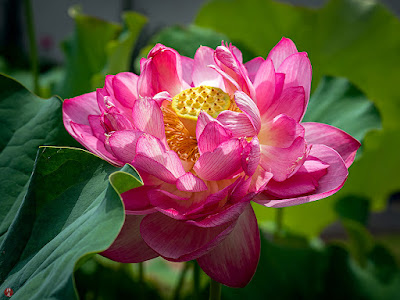The large splendid flowers of sacred lotus are opening one after another and are announcing the arrival of dazzling summer with their gorgeous appearance and pleasant fragrance.
The various gentle flowers, that once bloomed so abundantly during the rainy season gone by, have already vanished into thin air completely, as if they were just the beautiful ephemeral illusions that I had under the gloomy sky.
In Japan, lotus flowers typically begin to bloom around mid-July. A lotus flower ordinarily has 16 petals, numerous short yellow stamens and a rounded yellow pistil. Pollen carried by beetles adheres onto the pistil, causing it to turn from yellow to brown and to bear many seeds.
This flower blooms early in the morning, closes in the evening and opens again the next morning. After repeating this cycle of opening and closing for four days, its elegant flower petals fall off one by one and the short life of the flower ends quietly.
















